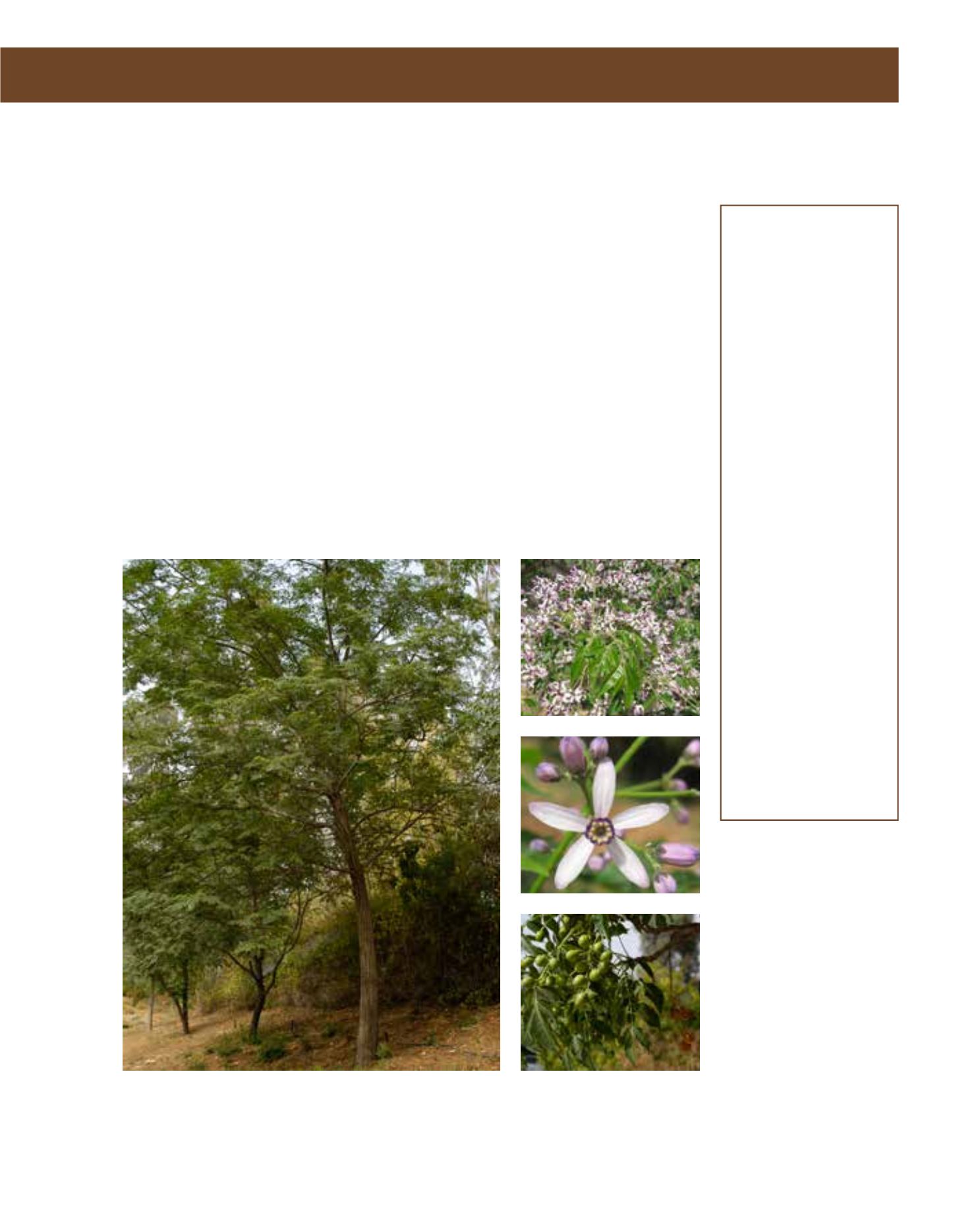

GENERAL
Origin
:
Mediterranean,
sub-tropical,
tropical
Vigour
:
fairly fast
growing
Humidity
:
semi-arid, semi-
humid, very
humid
Propagation :
sowing and
pricking out,
cuttings
Maintenance :
moderate
CONDITIONS
Urban climate :
resistant
Dessication :
vulnerable
Stagnant water :
vulnerable
Irrigation
:
medium
Salinity/ppm :
high (3500 ppm)
Hardiness
:
-12°C
SHAPE
Type
:
tree
Height
:
6 m-17 m
Spread
:
8 m-12 m
Foliage
:
deciduous
FLOWER
Colour
:
lilac, violet,
yellow
Size
:
15 cm - 25 cm
Period
:
May - June
Smell
:
scented,
moderate, flower,
sweet
FRUIT
Type of fruit :
berry
Fruit size
:
0.8 cm - 1.4 cm
Toxicity
:
poisonous
Melia is also called Bead Tree, Chinaberry, Persian Lilac and Pride of India. Melia azederach
is a deciduous tree that reaches a height of between 6 and 17 metres with a spread of up to 12
metres. Azederach comes from the Persian ‘azad dirakht’, and means ‘the gorgeous tree’. It ori-
ginates from southwest Asia and western China. It has a broad open crown and often develops
multi-branches. The fresh-green leaves are arranged alternately, with an ovate form and dentate
margins. The lilac, violet and whitish-yellow flowers appear in spring, in panicles up to 25 cm
long. The single flowers are about 1.5 cm in size. The tree flowers after three or four years for the
first time. After flowering, the tree develops attractive round yellow berries, each about 1 cm in
size. Prayer beads were once made from the seeds. Occasional pruning of the tree is recommen-
ded. Propagation can be done by seed and in good conditions by self-seeding and by runners.
The Bead Tree normally grows in regions with an annual rainfall of between 600 and 1,000 mm.
Accordingly, the tree responds well to air humidity and regular irrigation. It can also withstand
medium salinity. As a younger tree, it may suffer from winter frost. In Arriyadh, it can be found
in the Diplomatic Quarter in the inner Tuwaiq Palace garden. For use, it is recommended that
this tree be planted in protected areas with appropriate microclimates, such as in parks or larger
gardens, where it is also protected from wind damage. It is beautiful as a specimen tree or in
small groups.
200
Melia azedarach,
Meliaceae
Bead Tree,
Chinaberry, Persian Lilac, Pride of India
















